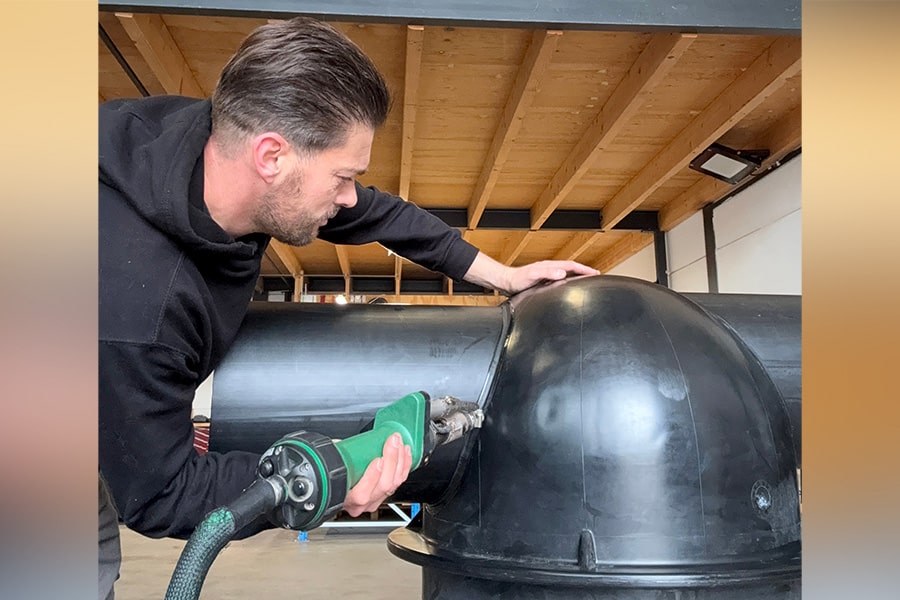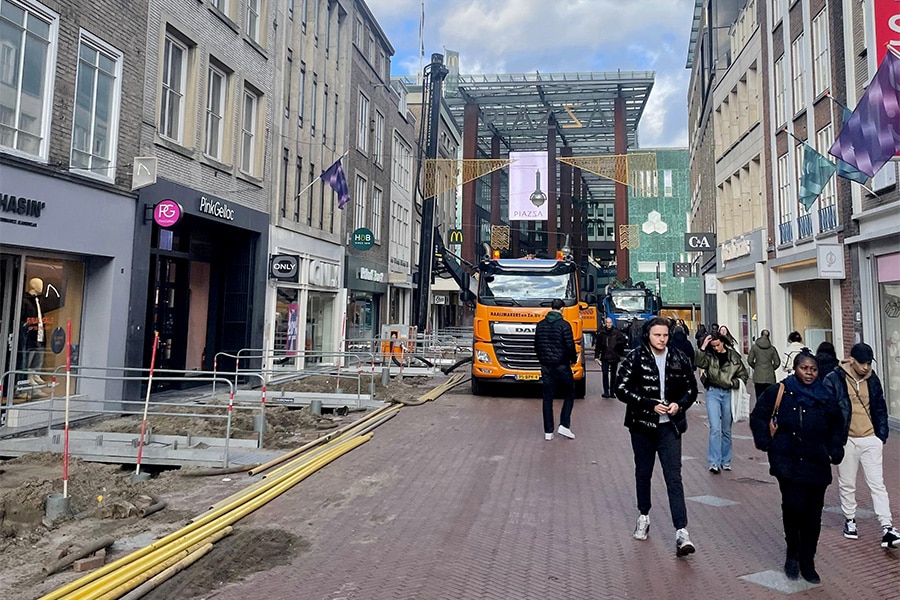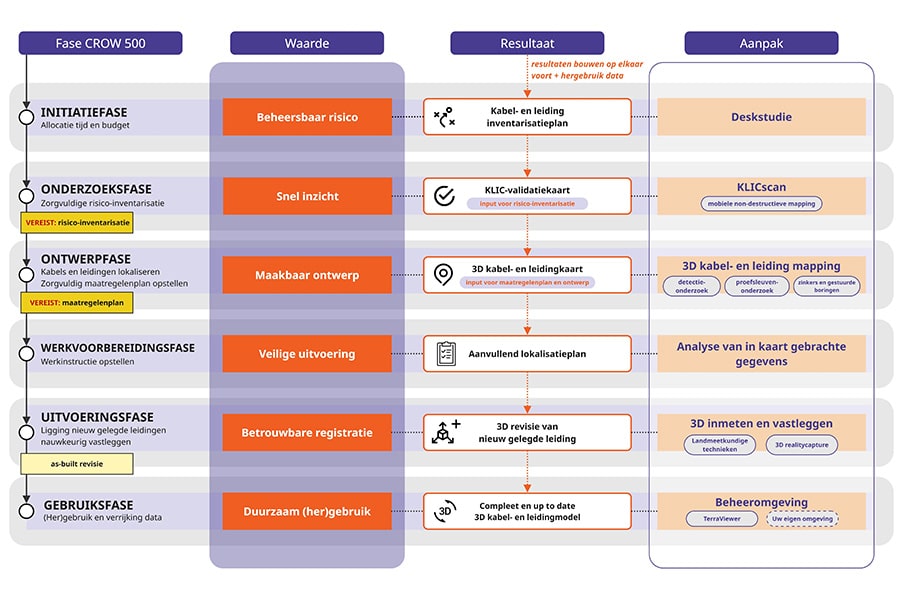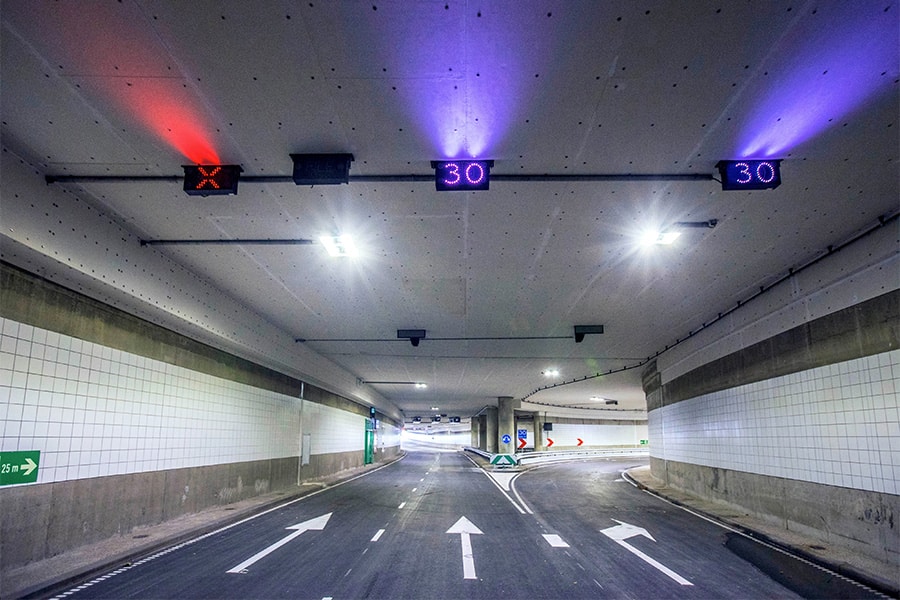
Pulled barrier increases safety in Rottemer Tunnel
As in many other tunnel projects, construction consortium De Groene Boog prefers a drawn barrier to a prefabricated one for the Rottemer Tunnel. This specific technique makes it possible to create a more flowing line, which in turn results in a calmer image for the road user. BKB Infra is considered the specialist in the realization of pulled barriers and for this project it even composed a specific mold and a fire-retardant concrete mixture.
Since the first project in the combi tunnel in Nijverdal in 2012, BKB Infra's pulled barrier concept has taken off. The Sluiskil tunnel, the RijnlandRoute, the Victory Boogie Woogie tunnel, the tunnels in the Blankenburg connection, these are just a few of the many projects where BKB Infra has poured vehicle barriers into the work. "What we do is a kind of 3D printing wholesale," says Laurens Bogerd, commercial manager at BKB Infra. "Using our slipform paver, we create a concrete barrier from concrete mortar in one pass in a smooth line."
Additional impetus toward fire resistance
BKB Infra is at home in our homeland's tunnels and knows better than anyone else how to convert the preconditions and requirements into a ready-made solution. "That is also the case here with the A16 Rotterdam," says Laurens and continues: "For example, Rijkswaterstaat has specific fire safety requirements. The mixture we are using here for the drawn barrier has been adapted and tested in such a way that it gives the tunnel's fire resistance an extra boost. This is the same mixture that we previously used on the Blankenburg connection." The mixture flows through a mold in the slipform paver to achieve the desired end result. "Such a machine is supplied from the manufacturer with a standard mold. However, we have modified and further developed this in-house, so that we can run much more efficiently and finish the barrier at the level for which you normally use the CUR100 standard B9."

Barrier with freestanding head
In total, BKB Infra is providing the A16 Rotterdam with 11,258 meters of towed barrier, most of which will be 80 centimeters high in the closed tunnel (8,950 meters). In the ramps, the barrier will soon be 90 centimeters high. "In anticipation of this work, last year we already realized a first phase of several hundred meters with our Wirtgen SP25i slipformpaver in a connecting arch of the A16 with the A13," explains Laurens. "Here there was no choice but to pour into the work, as the 90-centimeter high barrier was positioned against an existing wall with a noise barrier above it. There was not enough space to 'stick' the barrier completely against the wall. Because of the lack of containment, we developed a specific sliding formwork for this purpose, so that we could execute the last 30 centimeters of the barrier with a "free-standing head. We don't turn our hand to this type of custom construction either."
Expansion joint and saw cuts
BKB Infra's Wirtgen SP25i slipform paver is equipped with a GPS unit. "This allows us to determine the design height of the barrier directly from the 3D design of The Green Arch and pour it onto the road in a smooth line," Laurens explains. "Structurally, the tunnel is split into 25-meter sections. So every 25 meters we place an expansion joint in our barrier, so that the bays can dilate and the barrier is not crushed. Every 3.10 meters we also put a shrinkage joint, a 5-centimeter saw cut over the full height of the barrier."
Catch cutouts by machine
When a pulled barrier is applied, unevenness in the subway can be absorbed very easily. In addition, BKB Infra also devised a solution for the necessary auxiliary post boxes and escape doors in the tunnel. "We modified the mold in such a way that we can run around it without removing the machine from the wall. Of course, you can also manually cut out and pour such recesses afterwards, but that costs a lot of time and money. And we'd rather spend the latter on a custom mold, so that we can turn everything by machine with the very highest quality. And within a shorter time frame. Thanks, by the way, to parent company VolkerWessels, a large and solid party that helps make it possible to invest in new molds and techniques."
Traffic circle tires and concrete lanes
The original idea was to pull the barrier first and only then turn the asphalt. Meanwhile, the first layers of asphalt have already been turned and only the overlay needs to be applied. "That's beneficial for us," Laurens believes. BKB Infra's slipform paver is currently running at full speed. "According to schedule, we will be ready by the end of February 2024. By the way, we are not non-stop on the project. We coordinate the schedule with De Groene Boog and realize tube by tube. Between jobs, we are perfectly capable of diverting to other projects elsewhere in the country. This is because the slipform paver is versatile and flexible. With this machine we also pour in the flat, such as bicycle paths in a range from 2 to 4.5 meters wide. We also have a number of other machines, both smaller and larger. With our SP1600 we realize in one go a concrete lane of 10 meters wide. With the smaller SP15i we also realize traffic circles and all line-shaped constructions. With our pavers, the line-shaped solutions can be poured perfectly in the work."




